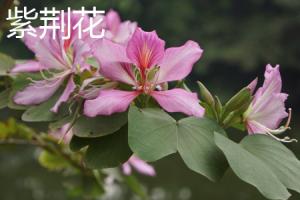Does Bali Plant Many Trees?
Bali, an Indonesian island situated between Java and Lombok, is renowned for its breathtaking scenery, sandy beaches, and vibrant culture. While Bali is home to numerous tourist attractions, it is also known for its reforestation efforts. Bali's lush flora and fauna are integral to the island's ecosystem and sustain its inhabitants. Bali's reforestation initiatives aim to restore the island's green cover and preserve its natural beauty.
Bali's Forests Before Reforestation Efforts
Bali's forests have been under threat in recent years due to tourism and agriculture. The island's forests are home to a diverse range of flora and fauna, including several endangered species such as the Bali starling and the Bali tiger. However, the forests have been shrinking due to deforestation, which has resulted in soil erosion and increased wildlife extinction.
Bali's forests have also been affected by the cultivation of crops such as coffee, rice, and palm oil. In pursuit of financial gain, farmers have encroached upon the forests, leading to a loss of habitat for the island's wildlife. Balinese culture also involves the use of wood in constructions such as furniture, traditional boats, and temples. The overuse of wood has contributed to deforestation and the loss of Bali's natural heritage.
The Reforestation Efforts in Bali
Bali's reforestation efforts are diverse and innovative. The government has been working with local communities to initiate planting activities in areas where forests have been lost. The activities include the cultivation of native plant species that provide food and habitat for the island's wildlife. The reforestation initiatives also involve the creation of protected areas where wildlife can thrive undisturbed.
Bali has also conducted tree-planting activities to create “Green Corridors” that connect wildlife habitats across the island. The Green Corridors consist of rows of trees, which reduce soil erosion and provide nutrients required by the local flora and fauna. The corridors are designed to increase the resilience of Bali's ecosystem and to enhance the island’s biodiversity.
Bali & the "One Million Trees" Campaign
The "One Million Trees" campaign is a notable project in Bali that aims to plant one million trees across the island by 2022. Led by Bali's Governor, Koster, the primary objective is to reduce Bali's carbon footprint and increase the island's green cover. The campaign involves the participation of government agencies, businesses, local communities, and tourists. It has gained tremendous support and recognition from global leaders, including UN Secretary-General Antonio Guterres.
The campaign's success has been due to its integration of Balinese culture and traditional knowledge in tree planting activities. The campaign also focuses on empowering local communities and generating awareness about the importance of planting trees for the environment.
The Benefits of Reforestation in Bali
Bali's reforestation efforts have numerous benefits for the island's ecosystem and its inhabitants. Reforestation helps prevent soil erosion, reduces the risks of natural disasters such as landslides and floods, and improves water quality. The planting of native species also provides food and habitat for Bali's wildlife, which enhances the island's biodiversity.
Reforestation also contributes to Bali's economy, mainly through eco-tourism. The green cover attracts tourists, who seek to experience Bali's natural beauty and wildlife. The reforestation initiatives, including the Green Corridors and protected areas, have also provided opportunities for eco-tourism activities such as trekking, bird-watching, and conservation education through volunteer programs.
Conclusion
Bali's reforestation efforts have been commendable, and they serve as an excellent model for other regions. The initiatives have demonstrated the importance of community participation, awareness generation, and traditional knowledge in preserving the environment. While Bali still faces several environmental challenges, such as the improper disposal of waste and the overuse of groundwater, the reforestation initiatives serve as a significant step towards sustainability.

 how many times do yo...
how many times do yo... how many planted tre...
how many planted tre... how many pine trees ...
how many pine trees ... how many pecan trees...
how many pecan trees... how many plants comp...
how many plants comp... how many plants can ...
how many plants can ... how many plants and ...
how many plants and ... how many pepper plan...
how many pepper plan...




























